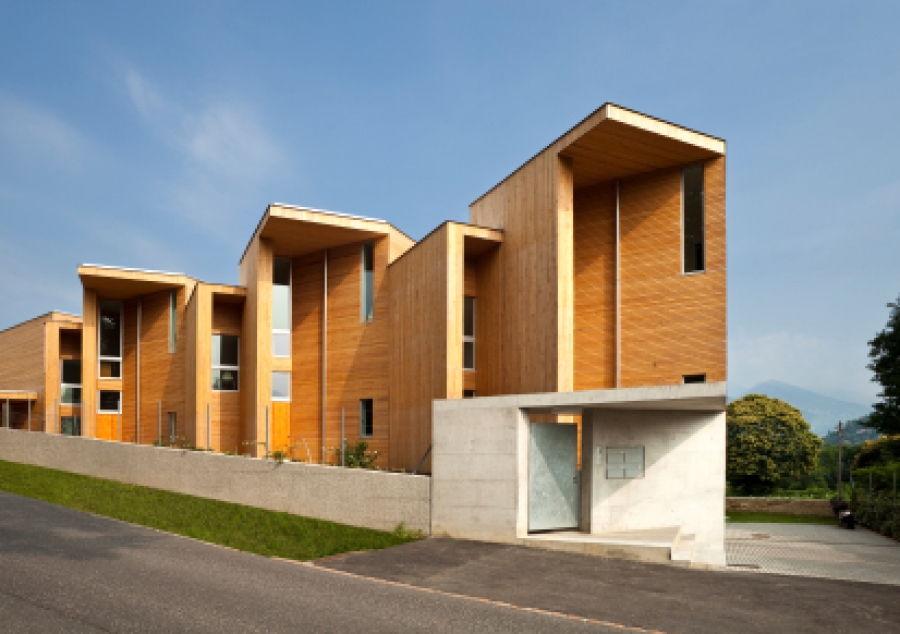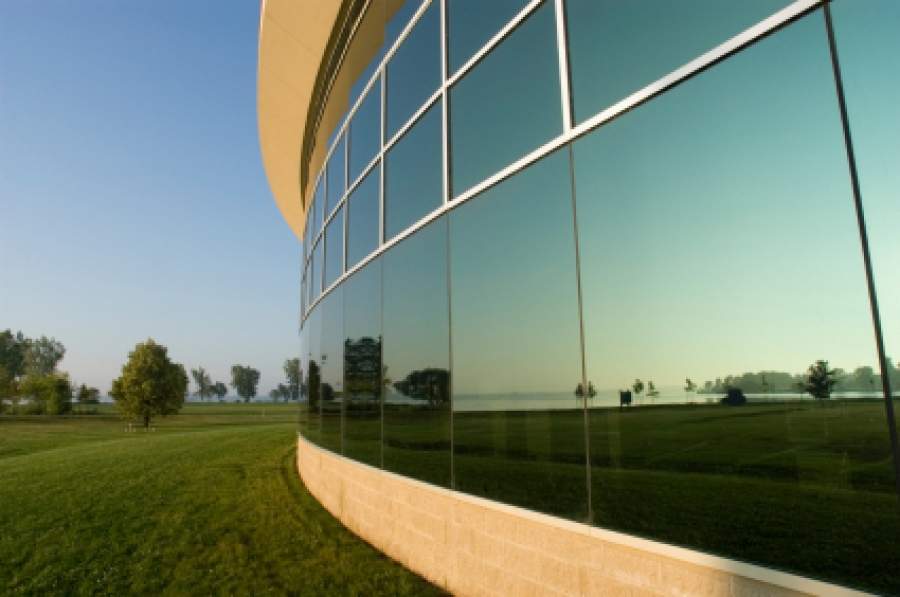Challenges of Building Green: Certification Programs
Builders and project leaders are taking on a heightened level of responsibility when it comes to deciding whether to participate in certification programs, determining which programs best reflect their values and standards, and ultimately selling the idea and cost of certification to the owner. I spoke with several industry experts to get a better understanding of the challenges associated with building green and certification programs. Although opinions certainly vary, it seems that participation has not yet become an industry-wide expectation because some builders are not yet convinced that certification is necessary.

In addition, some experts believe that certification may unintentionally result in inefficient building practices, due to a builder’s desire to “chase points” rather than build. Yet one common theme surfaced: The experts agree that certification programs are undoubtedly impacting costs, timelines, and building practices in the industry’s quest to build green.
Program Participation
“When LEED for Homes became a hot topic about three years ago, it was definitely considered to be cost-prohibitive and cumbersome,” says Dennis Steinhauer, president of Archer Construction. “But those were the days when everybody was just making claims about their work, and owners really didn’t see the need to certify anything.”
Steinhauer says that this perception has changed and that builders, developers, and owners are now seeing a certified project as a real differentiator in a competitive market.
“The U.S. Green Building Council succeeded in turning green from a color to a movement with the LEED program, which is great. Builders just need to keep in mind that you can’t build sustainably with a one-size-fits-all approach; you need to consider project goals, climate specifics, and budget.” Dr. Jennifer Languell, Trifecta Construction Solutions
“We focus on mid- to upper-range custom projects, and our owners generally are very open to and often insistent upon LEED certification,” says Steinhauer. “This year, roughly half of our projects will seek certification.”
Still, some builders are reluctant to participate in programs due to lack of knowledge and financial concerns. Many are turning to third-party consultants to advise them on best practices. “Because most builders are not yet experienced with certification programs, we very often have to help them overcome their reluctance,” said Marc Bluestone, president of Home Green Home. “The decision to build to program certifications comes from the desire to invest money now in order to save later and to have a higher-performing house that will be more comfortable and durable.”
Impact on Costs and Timelines
The professionals I spoke with all agreed that certification requires extra time, effort, and money. However, they disagreed on its overall impact on the construction process. Some have integrated it into their practices to the extent that it’s now just part of the way they do business. For others, it’s still viewed as cumbersome and cost-prohibitive.
“LEED adds a few thousand dollars and minimal administrative time for complete rating and certification for residential building projects; while it doesn’t affect our timeline, it requires planning for additional inspections during construction,” says Sloan Ritchie, owner of Cascade Built. “But it’s not cumbersome to us; it’s just the way we build.”
“When LEED for Homes became a hot topic about three years ago, it was definitely considered to be cost-prohibitive and cumbersome. But those were the days when everybody was just making claims about their work, and owners really didn’t see the need to certify anything.” Dennis Steinhauer, Archer Construction
Bluestone agrees that certification programs do not have to significantly affect the timeline of a project, but he says that these programs do impact the budget. “They do have an effect on budget, both in terms of the added cost of materials (check out Challenges of Building Green: Material Selection) and labor to meet program certification standards, as well as the cost of administering the program itself,” says Bluestone. “But it is hard to estimate added cost because projects vary so widely.”
The impact on the process and budget may depend on when the decision is made to achieve certification. “If you are able to incorporate the certification programs from the initial project conception through construction, the budget and timeline can have little effect,” says Holly Hawkins, director of sustainable services for Tri-North Builders. “But if the owner wants to go platinum, you better have a very good, flexible team,” she says.
Hawkins explained that her company has been involved in projects where LEED was incorporated into the building two weeks prior to construction starting. “We were able to maintain both the schedule and budget, but it does add another level of complexity to the project,” she says.
Even though it may take more time to source materials and even though the materials may cost more, Steinhauer says that it’s worth it to participate in LEED. “The LEED platform really hits the nail on the head with its comprehensive approach; it’s just as much about energy and resource efficiency and proper location of a building as it is about green materials,” he says. “In a LEED home, you can score big points for a low power bill, and that’s pretty easy to sell as an investment; most people have no problem fitting it into the budget.”
Steinhauer explains that once you get used to going through the certification process, it becomes easier and more efficient. “Like anything else, the more you do it, the more efficient you get,” he says. “It doesn’t take long to find your sources and get your subs on board with the way you want it done.”
Inefficient Practices
Opinions regarding the need for certification are mixed. For some, certification is necessary despite the additional investment of time and money. For others, it’s just not realistic due to the cost.
“We strongly suggest certification as a way to ensure the credibility of their project,” says Steinhauer. “We’re all about ENERGY STAR and LEED For Homes.”
Dr. Jennifer Languell, owner of Trifecta Construction Solutions, does not believe certification is necessary if performance is verified. “Many builders end up chasing certification and become consumed with earning points instead of focusing on solid building science and actual performance,” she explains.
Earl Yi with Associated Renewable, Inc. agrees that trying to earn points can result in inefficient building practices. “Often project managers aim for compliance first, without understanding the overall building system and return on investment considerations,” he says. “This results in wasted time and money.”
“If you are able to incorporate the certification programs from the initial project conception through construction, the budget and timeline can have little effect. But if the owner wants to go platinum, you better have a very good, flexible team." Holly Hawkins, Tri-North Builders
Languell says that the current state of certification participation has much to do with the economic climate. “You have to look at what the market will bear, and for many builders, it’s not certification,” says Languell. “Building with sustainable materials and then backing up the home’s performance with third-party testing can often take the place of certification.”
According to Glen Hooper of Residential Energy Conservation, the initial cost and time associated with LEED certification is prohibitive for most builders. “The current downturn in the economy has prohibited us from building LEED-certified homes,” says Hooper. “The current mortgage assessment practices cannot cover the increased cost when you build high-performance homes, and banks fail to see the value of energy-efficient upgrades.”
Hooper built a home as part of the Builders Challenge that tested 60% more energy-efficient than code, yet it ended up being valued at $25,000 less than the contract price. This experience has caused him to proceed cautiously when investing in high-level upgrades and certifications. “In this economy, investing in sustainability for a negative return is just not practical,” he says.
Hooper does, however, choose to build to ENERGY STAR standards. “We built our first ENERGY STAR labeled home in 2007, for less than $5,000 more than a standard home,” said Hooper. “After discovering the differences, we decided that we would never build a home less than ENERGY STAR standards.”
Judith Karpova, a renewable energy consultant with Altren Consulting & Contracting, Inc., said certification is important from a credibility perspective, but it doesn’t necessarily yield the intended results. “We’ve found that it doesn’t necessarily help us or the homeowner’s level of sustainability,” she says.
Karpova explains that the bureaucracy and paperwork for many programs is extremely burdensome to contractors. “We have spent enormous amounts of time trying to guide homeowners through the process, which is not necessarily recouped with any benefits,” she says.
Regional Nuances
According to Languell, despite the challenges associated with building to certification standards, such standards are helping to make the industry more mindful of sustainability practices.
“The U.S. Green Building Council succeeded in turning green from a color to a movement with the LEED program, which is great,” says Languell. “Builders just need to keep in mind that you can’t build sustainably with a one-size-fits-all approach; you need to consider project goals, climate specifics, and budget.”
Languell advises that you appreciate LEED and other certification programs as a great resource for information but continue to invest in doing your own research, particularly when it comes to climate-specific systems.

Lisa Taylor Minor
Lisa Taylor is a freelance writer and marketing consultant. She has more than 16 years of experience as a communications professional and has worked with a variety of companies in the home products and building materials industry. Originally from Memphis, TN, Lisa earned a BA in Journalism from the University of Memphis in 1995 and a MA in Journalism from the University of Memphis in 1997. She spent the first 11 years of her career working in account service for Memphis advertising agencies Thompson & Company, Oden Marketing & Design, and Carpenter/Sullivan. Lisa then spent five years in Nashville, TN, with The Buntin Group, an Adweek Top 100 U.S. advertising agency, and Louisiana-Pacific Corporation, a leading manufacturer of building materials. Lisa currently lives in Denver, CO, and is Principal/Owner of Wazee Marketing.
Website: www.wazeemarketing.com



